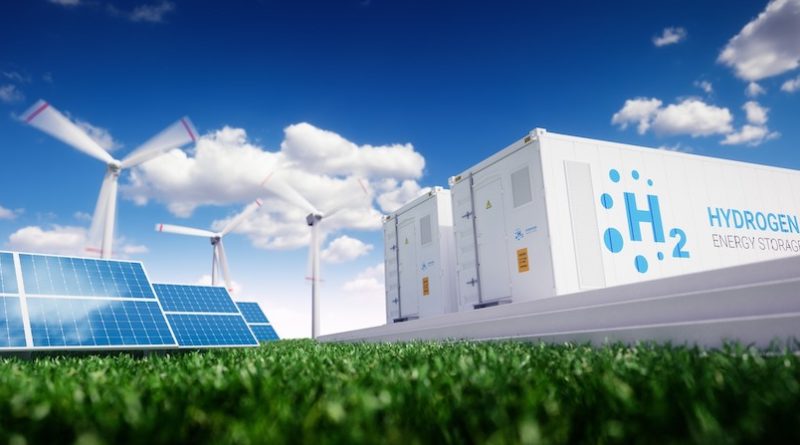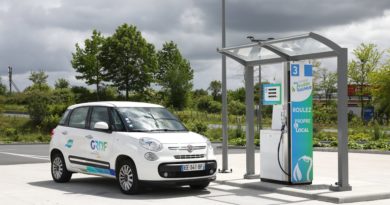
How Renewable Hydrogen Will Help Descarbonise the European Economy, The Case for Spain
Energy efficiency and renewable-based electrification are long since the cornerstone of global action towards decarbonisation. While the Inter- governmental Panel on Climate Change has made remarkably clear the need to focus on reducing greenhouse gas emissions, a number of institutions have filled in the details regarding which technologies can support on this endeavour. For example – the International Renewable Energy Agency has estimated that renewable energy and energy efficiency solutions together offer over 90% of the mitigation measures needed to reduce energy-related emissions.
Completing this picture, hydrogen has been widely acknowledged as a key energy carrier to decarbonise those sectors of the economy where electrification is not feasible or cost-effective. Examples of these sectors are parts of the energy-intensive industry, long-haul high load transport, maritime shipping or aviation. Its potential to storing energy and contributing to balancing out our power system is also extraordinary.
Hydrogen can certainly play a pivotal role in helping the world – and the EU – achieve climate neutrality by 2050, only if we make sure hydrogen is developed in line with this objective.
The European Commission published in July 2020 the excellent EU Hydrogen Strategy, which made a giant step in moving towards achieving EU climate and energy objectives. This Strategy set the development of renewable hydrogen – produced through electrolysis from renewable sources – as the unquestionable priority for the EU, recognising it is the most compatible option with the EU’s climate neutrality and zero pollution goal in the long term and the most coherent with an integrated energy system.
If renewable hydrogen is the best technology available for the 2050-horizon, it seems important we concentrate our financial and regulatory resources on renewable hydrogen, swiftly and decisively, from the very start. We must avoid investing in non-renewable technologies that risk becoming stranded assets in the medium-term. We cannot afford squandering our resources on technologies that will not be with us in thirty years.
The international competition on renewable hydrogen is expected to be fierce, at a time key international actors such as China, South Korea and Japan are solidly committing to climate neutrality and the U.S. Biden administration has made a strong pledge for the energy transition. These countries are in the works of releasing ambitious national hydrogen strategies, in which they show their clear determination to become leaders on cutting-edge technologies such as electrolysers or fuel-cell components.
If the EU intends to become a global frontrunner in this strategic, clean industrial ecosystem, which will be essential for our future climate-neutral energy system, every minute counts. There is no time for transition solutions.
Fully harnessing the potential for renewable hydrogen production within the EU, while building a strong, competitive EU value chain, must be our priority. For one reason – the EU has the capacity to succeed in it. According to the International Energy Agency, only between 2020 and 2025, the increase in renewables-based generation in Europe is expected to be more than nine times the rise in electricity demand. Also importantly, strategic autonomy and energy self-sufficiency are valuable assets the EU is in a position to guarantee for the future if we make the right decisions now.
R&D&i is going to be an important pillar across the whole renewable hydrogen value chain, most particularly for reducing costs and making renewable hydrogen a cheap, viable alternative to fossil-based hydrogen. To that end, an Important Project of Common European Interest (IPCEI) on renewable hydrogen can be crucial to facilitate channelling the necessary public funds to swiftly achieving technology maturity for renewable hydrogen production, while strengthening cross-border cooperation and creating a genuine EU value chain.
The vision of Spain is to develop the industrial ecosystem of renewable hydrogen by focusing first on replacing existing fossil-based hydrogen production – which amounts to 500,000 tonnes per year in Spain – by renewable hydrogen production.
Refining, fertilisers and other chemical products are good candidates for such a thing. Simultaneously, high-temperature industrial processes in steel or construction-material manufacturing have a significant potential to abate emissions by shifting in the short-term to renewable hydrogen. Likewise, we see valuable opportunities in the mobility sector, for example in maritime shipping, aviation or hard-to-electrify railways.
In a first stage, Spain is devising the pro– motion of renewable hydrogen clusters, which can bring closer producers and consumers while creating a synergies-fuelled ecosystem to kick-start the market. Building renewable hydrogen production capacity back-to-back to existing hydrogen demand will prevent unnecessary transmission and distribution infrastructure, reducing investment costs and carbon footprint. In a later stage, we will promote a more distributed production by using electrolysers to facilitate the integration of increasing shares of renewable electricity, following the guidance provided by the EU Energy System Integration Strategy and, namely, the principle of energy efficiency first.
Before designing any new infrastructure or repurposing existing gas infrastructure for dedicated renewable hydrogen, we should ensure the existence of sustainable and reliable demand.
Notwithstanding, we should plan no new additional investments in natural gas infrastructure, as they risk locking us into fossil fuels for decades, diverting us from climate neutrality. The geography of hydrogen is likely to be significantly different from existing natural gas corridors.
Following this vision, Spain has recently approved a National Hydrogen Roadmap, reinforcing Spain’s commitment to renewable hydrogen. The Roadmap foresees an installed capacity of at least 4GW electrolysers by 2030 – 10% of what expected by the European Commission throughout the UE by that year – for which 8.9 billion EURO are expected to be mobilised, while foreseeing an intermediate milestone of 300-600 MW by 2024. Spain’s rich renewable resources and solid value chains will be the warrants of this development. Indeed, together with our Portuguese friends, we have the potential to build a strong Iberian hub of renewable hydrogen in the medium- and long-term, while first prioritising domestic production and demand, expanding renewable hydrogen clusters and minimizing carbon footprint and transport costs.
The post-COVID19 recovery is an exceptional opportunity. Let us harness it as a catalyser to inject the impetus renewable hydrogen needs to develop its full potential and significant benefits.




